
Arthur Westwell
@arthurwestwell.bsky.social
Medieval historian. Liturgical manuscripts. Romanesque churches.
Wissenschaftlicher Mitarbeiter at the Universität Regensburg.
Picture: Vienna, Österreichische Nationalbibliothek, cod.lat.958 and Tours, Bibliothèque Municipale, Ms. 184
Wissenschaftlicher Mitarbeiter at the Universität Regensburg.
Picture: Vienna, Österreichische Nationalbibliothek, cod.lat.958 and Tours, Bibliothèque Municipale, Ms. 184
www.theguardian.com/music/2025/o...
At least I got a letter to the guardian published online about this. I suppose it won't make a difference to a sale one could describe as fraudulent, which the guardian gave free press to, but it's there.
At least I got a letter to the guardian published online about this. I suppose it won't make a difference to a sale one could describe as fraudulent, which the guardian gave free press to, but it's there.
October 30, 2025 at 7:18 PM
www.theguardian.com/music/2025/o...
At least I got a letter to the guardian published online about this. I suppose it won't make a difference to a sale one could describe as fraudulent, which the guardian gave free press to, but it's there.
At least I got a letter to the guardian published online about this. I suppose it won't make a difference to a sale one could describe as fraudulent, which the guardian gave free press to, but it's there.
I'm afraid there's a lot wrong with the expert assessment of this fragment, let alone the claim of supposed uniqueness of finding neums in a late ninth century manuscript that's getting press. Liturgical fragments get sold quite often so auction houses could try a bit harder

Some of the earliest written notes in western musical history discovered in Pennsylvania
Ninth-century manuscript for Easter services remained ‘out of sight’ for years in hands of private collector
www.theguardian.com
October 28, 2025 at 9:59 PM
I'm afraid there's a lot wrong with the expert assessment of this fragment, let alone the claim of supposed uniqueness of finding neums in a late ninth century manuscript that's getting press. Liturgical fragments get sold quite often so auction houses could try a bit harder
Reposted by Arthur Westwell
Two details of decoration and initials from the Exultet Rolls in the Museo Diocesano, Bari. Fabulous display.
#MedievalSky #Manuscripts
#MedievalSky #Manuscripts


May 29, 2025 at 12:35 PM
Two details of decoration and initials from the Exultet Rolls in the Museo Diocesano, Bari. Fabulous display.
#MedievalSky #Manuscripts
#MedievalSky #Manuscripts
Two Norman Romanesque fonts of Cornwall. Left in Saint Nonna's Church in Altarnun. Right in Saint Petroc's in Bodmin.
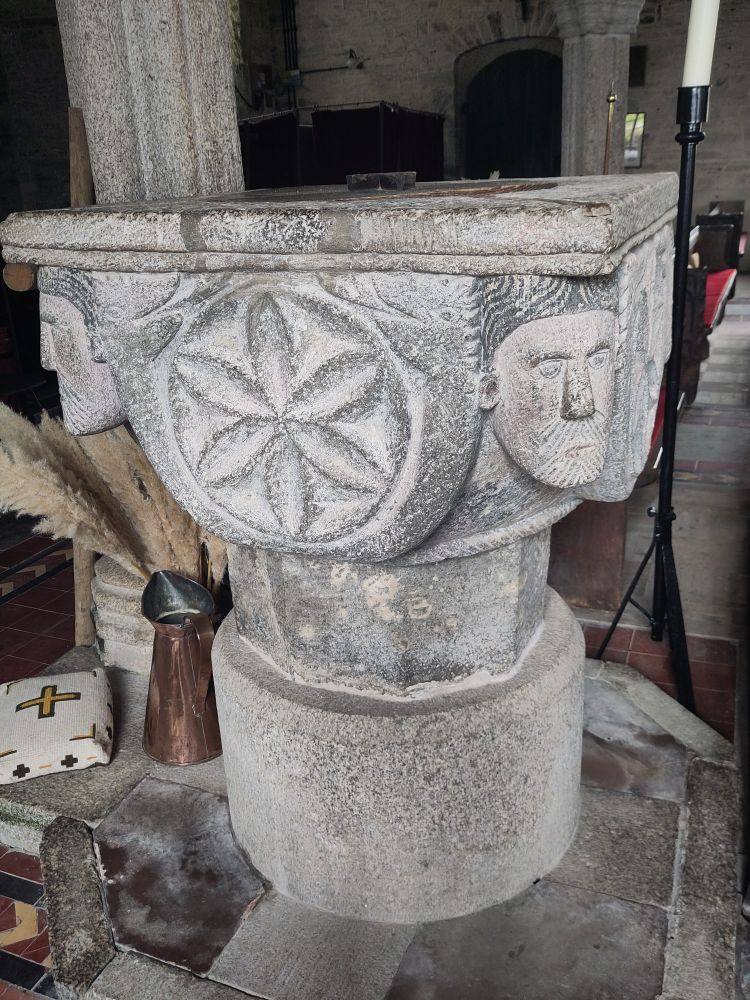

May 28, 2025 at 4:26 PM
Two Norman Romanesque fonts of Cornwall. Left in Saint Nonna's Church in Altarnun. Right in Saint Petroc's in Bodmin.
Manuscripts on display in the soaring monasteries of Meteora. Here in the Great Meteoron museum are:
1) Cod. 106. A 16th century liturgical book into which a miniature of an evangelist from the ninth century is incorporated.
2) Cod. 969. A copy of the Ladder of Divine Ascent from the 11th century
1) Cod. 106. A 16th century liturgical book into which a miniature of an evangelist from the ninth century is incorporated.
2) Cod. 969. A copy of the Ladder of Divine Ascent from the 11th century


April 30, 2025 at 12:59 PM
Manuscripts on display in the soaring monasteries of Meteora. Here in the Great Meteoron museum are:
1) Cod. 106. A 16th century liturgical book into which a miniature of an evangelist from the ninth century is incorporated.
2) Cod. 969. A copy of the Ladder of Divine Ascent from the 11th century
1) Cod. 106. A 16th century liturgical book into which a miniature of an evangelist from the ninth century is incorporated.
2) Cod. 969. A copy of the Ladder of Divine Ascent from the 11th century
I saw a twelfth century Corfiot Gospel Book manuscript in the museum of the monastery of Panagia Theotokos in Palaiokastrista. It is one of the oldest monasteries on Corfu, though entirely rebuilt in the eighteenth century. Perhaps this lovely manuscript dates from the founding period.


April 26, 2025 at 7:53 AM
I saw a twelfth century Corfiot Gospel Book manuscript in the museum of the monastery of Panagia Theotokos in Palaiokastrista. It is one of the oldest monasteries on Corfu, though entirely rebuilt in the eighteenth century. Perhaps this lovely manuscript dates from the founding period.
Reposted by Arthur Westwell
Nearby are the ruins of the Paleochristian basilica of old Palaiopolis, a magnificent structure in its day, which fell victim to successive invasions. It was first built in the fifth century, renewed in the eleventh but finally much destroyed by bombing during the Second World War.


April 23, 2025 at 3:34 PM
Nearby are the ruins of the Paleochristian basilica of old Palaiopolis, a magnificent structure in its day, which fell victim to successive invasions. It was first built in the fifth century, renewed in the eleventh but finally much destroyed by bombing during the Second World War.
Reposted by Arthur Westwell
The middle Byzantine church of Saints Justin and Sosipater is the oldest church on Corfu, dating to around 1000 and dedicated to two saints named in the Pauline Epistles and Acts who came to evangelize the island in their later years.


April 23, 2025 at 3:30 PM
The middle Byzantine church of Saints Justin and Sosipater is the oldest church on Corfu, dating to around 1000 and dedicated to two saints named in the Pauline Epistles and Acts who came to evangelize the island in their later years.
The middle Byzantine church of Saints Justin and Sosipater is the oldest church on Corfu, dating to around 1000 and dedicated to two saints named in the Pauline Epistles and Acts who came to evangelize the island in their later years.


April 23, 2025 at 3:30 PM
The middle Byzantine church of Saints Justin and Sosipater is the oldest church on Corfu, dating to around 1000 and dedicated to two saints named in the Pauline Epistles and Acts who came to evangelize the island in their later years.
The secularisation of Bavaria in 1803 destroyed many great monasteries. Wessobrunn is one of the tragic cases, there's a Romanesque tower (called the Römerturm or Grauer Herzog) and some rococo corridors, all that remains of a place that claimed to be founded by Tassilo in the 8th century.


April 12, 2025 at 4:37 PM
The secularisation of Bavaria in 1803 destroyed many great monasteries. Wessobrunn is one of the tragic cases, there's a Romanesque tower (called the Römerturm or Grauer Herzog) and some rococo corridors, all that remains of a place that claimed to be founded by Tassilo in the 8th century.
Kloster Seeon was founded at the end of the tenth century and received the special status of a Reichsabtei, directly under the Emperor, soon afterwards. The monks here produced some of the most brilliant manuscripts of Ottonian times it passed to the Bavarian state with the 1803 secularisation.



April 6, 2025 at 7:52 AM
Kloster Seeon was founded at the end of the tenth century and received the special status of a Reichsabtei, directly under the Emperor, soon afterwards. The monks here produced some of the most brilliant manuscripts of Ottonian times it passed to the Bavarian state with the 1803 secularisation.
Lovely to see that the @bsbmuenchen.bsky.social have gone all out for the new exhibit on Japanese wood cuts: "Farben Japans". Here until 6th July.


March 28, 2025 at 1:45 PM
Lovely to see that the @bsbmuenchen.bsky.social have gone all out for the new exhibit on Japanese wood cuts: "Farben Japans". Here until 6th July.
Reposted by Arthur Westwell
bsky.app/profile/pawe...
My amazing colleague and friend Pawel Figurski has joined us. Follow for learning about medieval Poland, state formation and kingship, plus there's no one who shows the importance of liturgy more clearly and lucidly. He even was in Der Spiegel recently!!!
My amazing colleague and friend Pawel Figurski has joined us. Follow for learning about medieval Poland, state formation and kingship, plus there's no one who shows the importance of liturgy more clearly and lucidly. He even was in Der Spiegel recently!!!
bsky.app
March 25, 2025 at 5:14 PM
bsky.app/profile/pawe...
My amazing colleague and friend Pawel Figurski has joined us. Follow for learning about medieval Poland, state formation and kingship, plus there's no one who shows the importance of liturgy more clearly and lucidly. He even was in Der Spiegel recently!!!
My amazing colleague and friend Pawel Figurski has joined us. Follow for learning about medieval Poland, state formation and kingship, plus there's no one who shows the importance of liturgy more clearly and lucidly. He even was in Der Spiegel recently!!!
bsky.app/profile/pawe...
My amazing colleague and friend Pawel Figurski has joined us. Follow for learning about medieval Poland, state formation and kingship, plus there's no one who shows the importance of liturgy more clearly and lucidly. He even was in Der Spiegel recently!!!
My amazing colleague and friend Pawel Figurski has joined us. Follow for learning about medieval Poland, state formation and kingship, plus there's no one who shows the importance of liturgy more clearly and lucidly. He even was in Der Spiegel recently!!!
bsky.app
March 25, 2025 at 5:14 PM
bsky.app/profile/pawe...
My amazing colleague and friend Pawel Figurski has joined us. Follow for learning about medieval Poland, state formation and kingship, plus there's no one who shows the importance of liturgy more clearly and lucidly. He even was in Der Spiegel recently!!!
My amazing colleague and friend Pawel Figurski has joined us. Follow for learning about medieval Poland, state formation and kingship, plus there's no one who shows the importance of liturgy more clearly and lucidly. He even was in Der Spiegel recently!!!
For the medieval liturgy views over the age of 50 still get reproduced, because expertise to challenge them is going extinct. Eg Vogel from the '60s is still the main reference I see cited for the early middle ages, a narrow narrative which new access to manuscripts can do so much to enliven.
This week on the blog, I court controversy by suggesting that our understanding of history has in fact improved over the decades #history #academia
salutemmundo.wordpress.com/2025/03/20/n...
salutemmundo.wordpress.com/2025/03/20/n...
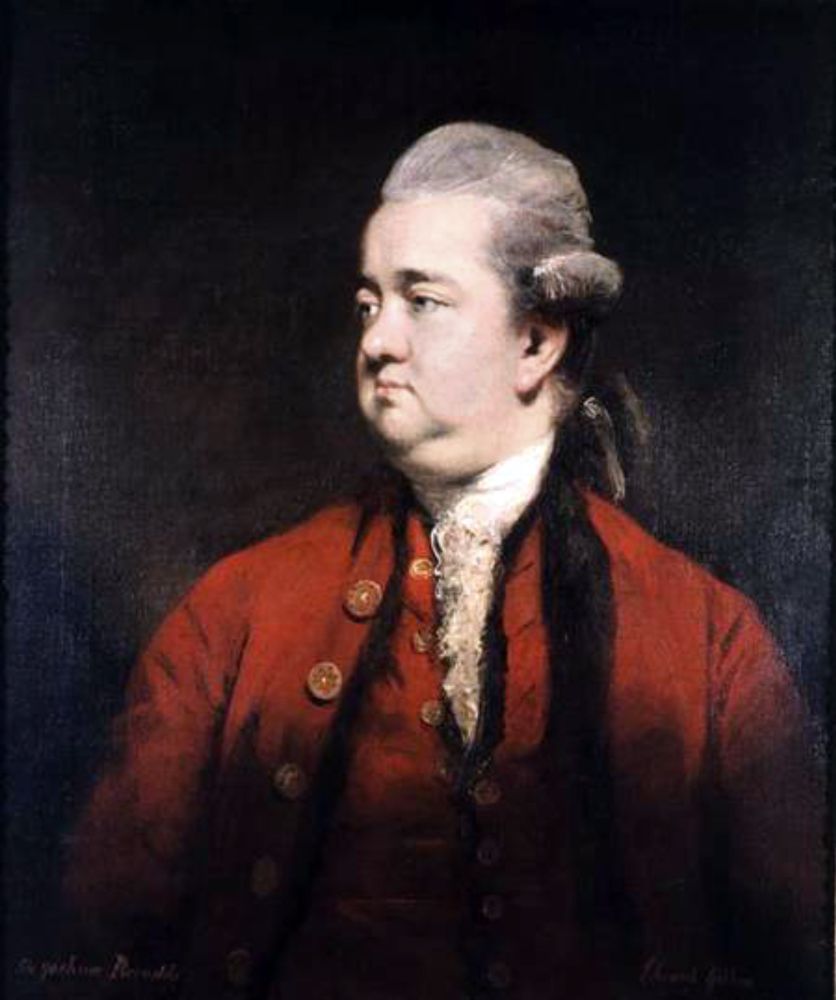
Never Trust Any Work of History Over the Age of Fifty!: Or, Please Stop Citing Edward Gibbon to Try to Win Arguments on the Internet
When I first began marking undergraduate essays, I noticed a curious phenomenon in the footnotes. In place of the cutting-edge reading list that I had painstakingly assembled, all accessible either…
salutemmundo.wordpress.com
March 20, 2025 at 5:09 PM
For the medieval liturgy views over the age of 50 still get reproduced, because expertise to challenge them is going extinct. Eg Vogel from the '60s is still the main reference I see cited for the early middle ages, a narrow narrative which new access to manuscripts can do so much to enliven.
The fresco of Saints Gallus and Magnus in the crypt of the monastery of St Mang in Füssen shows the two peripatetic monks and monastery founders on a journey together. Dating to around 1000, it lay hidden in the Romanesque crypt under the baroque church until 1950.


March 9, 2025 at 1:18 PM
The fresco of Saints Gallus and Magnus in the crypt of the monastery of St Mang in Füssen shows the two peripatetic monks and monastery founders on a journey together. Dating to around 1000, it lay hidden in the Romanesque crypt under the baroque church until 1950.
This amazingly intricate glass cup was made in Syria or Egypt in the eleventh century. It was a relic for two female saints who were said to have possessed it, Hedwig of Andechs and Elisabeth of Thuringia. Later, we know it was in the hands of Martin Luther. It is now in the Veste Coburg.

February 16, 2025 at 8:44 AM
This amazingly intricate glass cup was made in Syria or Egypt in the eleventh century. It was a relic for two female saints who were said to have possessed it, Hedwig of Andechs and Elisabeth of Thuringia. Later, we know it was in the hands of Martin Luther. It is now in the Veste Coburg.
Also I saw the marvellous ivory cover of the Gandersheim Evangeliar, a luxurious gospel book created in Metz under Louis the Pious. It came to England where it was noted in the possession of King Athelstan, here called Rex angulsaxorum er mercianorum. Now in the Kunstsammlung at the Veste Coburg



February 15, 2025 at 3:59 PM
Also I saw the marvellous ivory cover of the Gandersheim Evangeliar, a luxurious gospel book created in Metz under Louis the Pious. It came to England where it was noted in the possession of King Athelstan, here called Rex angulsaxorum er mercianorum. Now in the Kunstsammlung at the Veste Coburg
The ruins of the Premonstratensian Abbey, Kloster Veßra, in Thüringen. Founded in 1131 as family monastery of the Henneberg Counts. Though badly damaged by the fire only in 1939, it's still a wonderful example of the architecture of reformed monasticism.
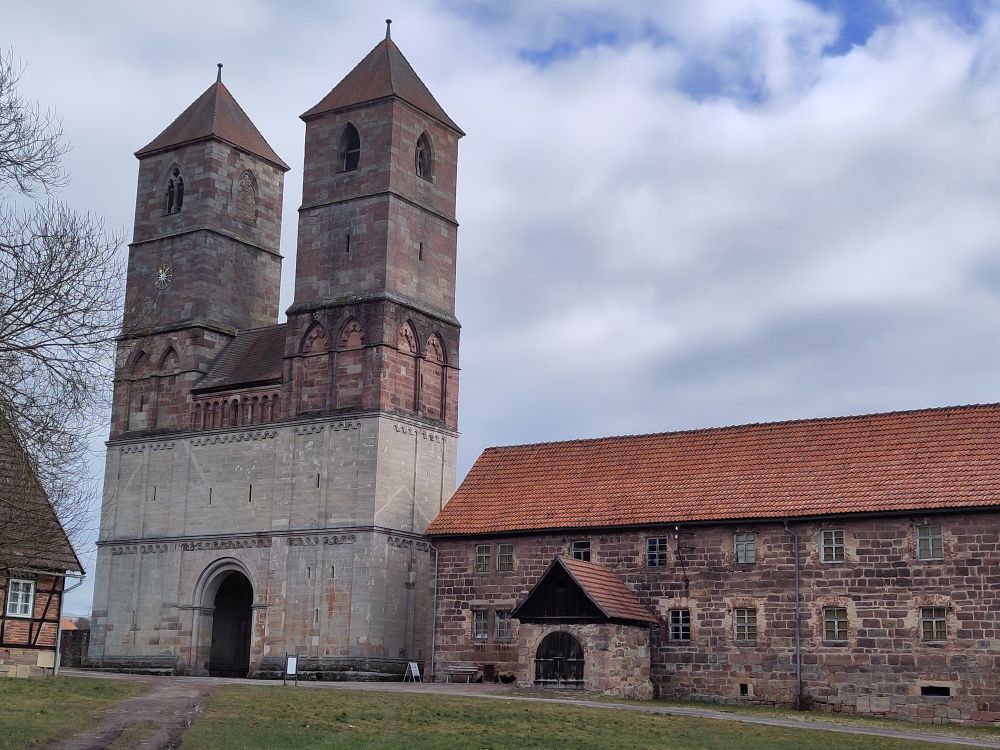


February 15, 2025 at 10:40 AM
The ruins of the Premonstratensian Abbey, Kloster Veßra, in Thüringen. Founded in 1131 as family monastery of the Henneberg Counts. Though badly damaged by the fire only in 1939, it's still a wonderful example of the architecture of reformed monasticism.
The three living and the three dead is a common motif of gothic art, recalling the transience of earthly life. In the church of Maria Himmelfahrt in Chammünster is a fine Bavarian example, dating to the second half of the fifteenth century.

February 8, 2025 at 10:41 AM
The three living and the three dead is a common motif of gothic art, recalling the transience of earthly life. In the church of Maria Himmelfahrt in Chammünster is a fine Bavarian example, dating to the second half of the fifteenth century.
Reposted by Arthur Westwell
The chant for #Candlemas (a little belated) in our fabulous 15th century processional, with 500 year old splodges of beeswax! It belonged to the long-vanished church of St John the Evangelist on Fishamble Street in Dublin & may have been used in Christ Church Cathedral next door

February 4, 2025 at 9:39 AM
The chant for #Candlemas (a little belated) in our fabulous 15th century processional, with 500 year old splodges of beeswax! It belonged to the long-vanished church of St John the Evangelist on Fishamble Street in Dublin & may have been used in Christ Church Cathedral next door
The overwhelming baroque church of Kloster Waldsassen has the bodies of no less than 10 catacomb saints, martyrs dug up in Rome and acquired over the seventeenth and eighteenth centuries. They are honoured on the 1st August in a special "Heilige-Leiber-Fest".
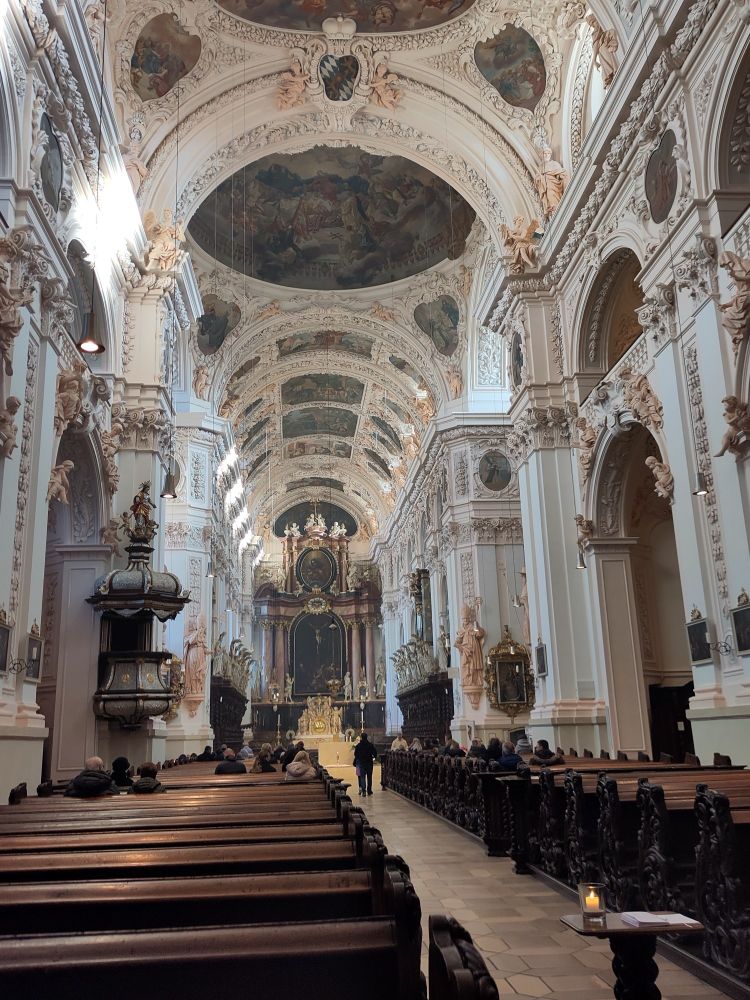
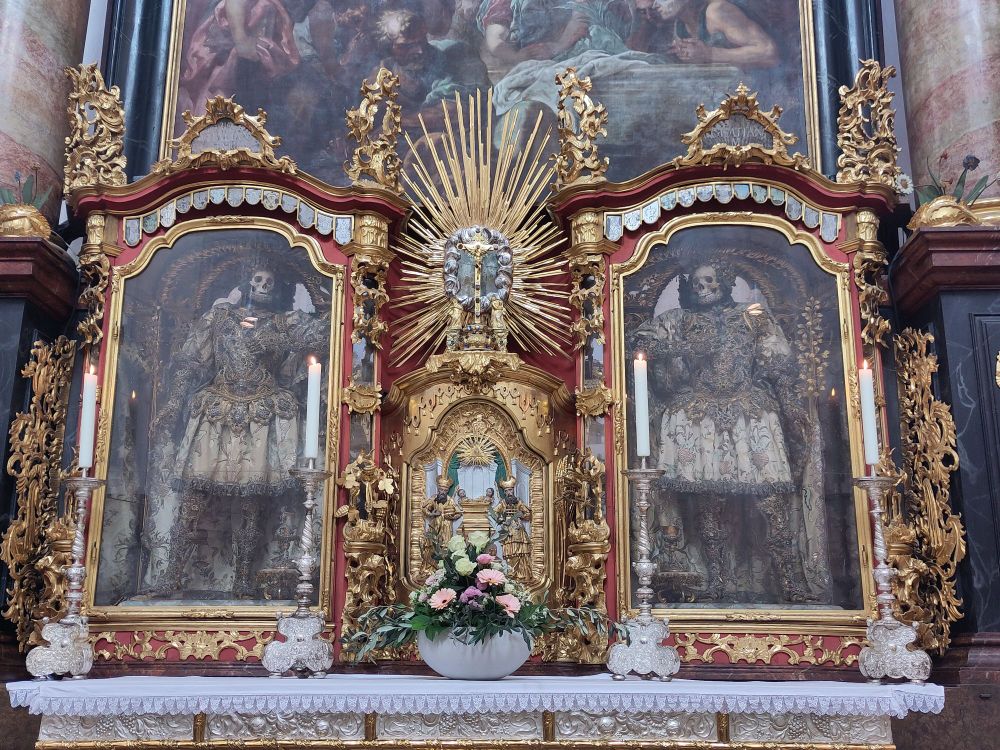

February 2, 2025 at 12:04 PM
The overwhelming baroque church of Kloster Waldsassen has the bodies of no less than 10 catacomb saints, martyrs dug up in Rome and acquired over the seventeenth and eighteenth centuries. They are honoured on the 1st August in a special "Heilige-Leiber-Fest".
Reposted by Arthur Westwell
Visiting Cheb in Bohemia (German Eger) and found that the city museum has this wonderful antependium, made by the Poor Clares of the city by embroidering hundred of tiny beads, coral and pearls. It dates around 1300 and I've never seen anything quite like it.




February 1, 2025 at 3:07 PM
Visiting Cheb in Bohemia (German Eger) and found that the city museum has this wonderful antependium, made by the Poor Clares of the city by embroidering hundred of tiny beads, coral and pearls. It dates around 1300 and I've never seen anything quite like it.
Visiting Cheb in Bohemia (German Eger) and found that the city museum has this wonderful antependium, made by the Poor Clares of the city by embroidering hundred of tiny beads, coral and pearls. It dates around 1300 and I've never seen anything quite like it.




February 1, 2025 at 3:07 PM
Visiting Cheb in Bohemia (German Eger) and found that the city museum has this wonderful antependium, made by the Poor Clares of the city by embroidering hundred of tiny beads, coral and pearls. It dates around 1300 and I've never seen anything quite like it.
Reposted by Arthur Westwell
Initial 'O'(mnipotens) depicting the Presentation in the Temple at the beginning of the Collect for the Mass of the Purification of BVM aka Candlemas (2nd February)
BnF MS Latin 9428; Sacramentarium of Drogo; 9th century (between 826/837 CE & 855 CE); Metz; f.38r @labnf.bsky.social
BnF MS Latin 9428; Sacramentarium of Drogo; 9th century (between 826/837 CE & 855 CE); Metz; f.38r @labnf.bsky.social


January 31, 2025 at 4:39 PM
Initial 'O'(mnipotens) depicting the Presentation in the Temple at the beginning of the Collect for the Mass of the Purification of BVM aka Candlemas (2nd February)
BnF MS Latin 9428; Sacramentarium of Drogo; 9th century (between 826/837 CE & 855 CE); Metz; f.38r @labnf.bsky.social
BnF MS Latin 9428; Sacramentarium of Drogo; 9th century (between 826/837 CE & 855 CE); Metz; f.38r @labnf.bsky.social

